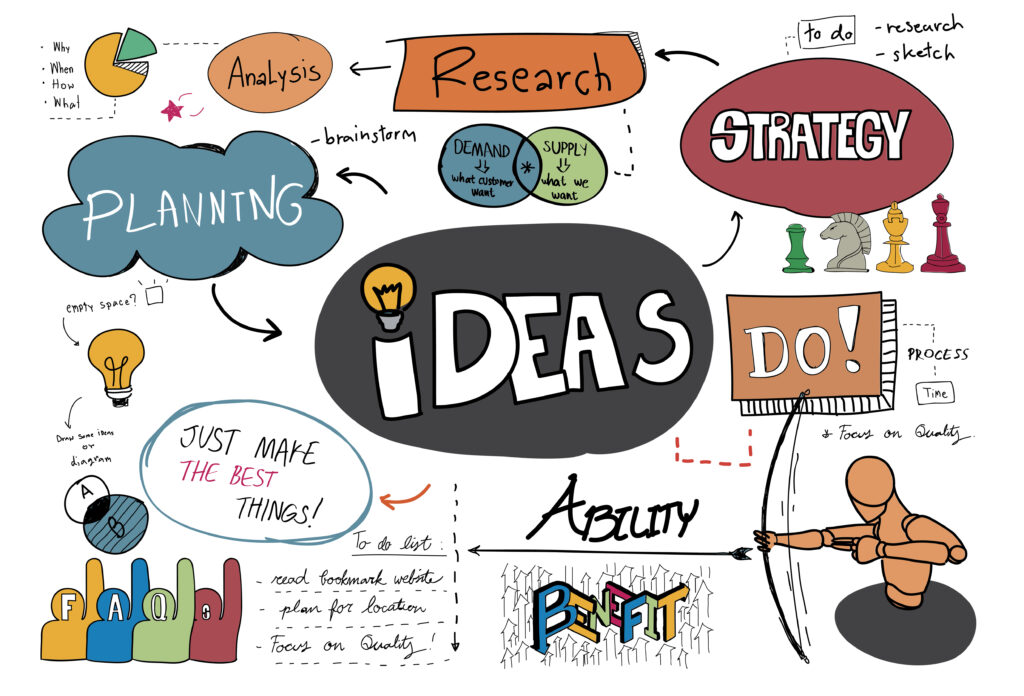How Mind Mapping Helps You

Unlocking Creativity Through Mind Mapping
Mind maps are a simple yet powerful way to brainstorm ideas, capture thoughts, and organise information naturally. Unlike rigid outlines, mind maps give you the freedom to connect concepts organically, sparking creativity and helping your ideas flow effortlessly.
Because all information is “anchored” to a central theme, mind maps also double as an excellent memory tool. By visually linking related ideas, your brain finds it easier to recall details later – far more effective than sifting through cluttered notes or scattered ideas.
Why Mind Mapping Works So Well
A mind map reflects the brain’s natural structure. Think of the central topic as the heart: ideas branch out like veins and arteries, feeding into other parts of the “system.” Alternatively, imagine the city centre – with main roads, landmarks, and side streets connecting everything together. This intuitive structure makes it easier to spot priorities, connections, and opportunities.
- Colours, shapes, and symbols highlight importance.
- Branches and sub-branches keep ideas grouped clearly.
- Visual memory is activated, making recall sharper.
This combination means your brain retains information longer and retrieves it faster.

Mind Mapping and Learning Outcomes
Research has consistently shown the academic benefits of mind mapping:
- A Johns Hopkins study revealed students using mind maps improved grades by 12% on average.
- Nobel prize winner Dr Roger Sperry demonstrated that engaging both brain hemispheres (logic and creativity) through visual learning enhances idea generation.
Dr. Sperry’s research proved that visual forms of note-making are more effective than written methods for generating ideas because it forces you to break free from traditional thinking patterns and use your creativity. He showed how the human brain has two hemispheres- one logical/cortexes and another imaginative/prefrontal area (represented by colors). These hemispheres work in sync when you make your thoughts visible through drawing or painting them on paper!
For students with dyslexia, autism, or concentration difficulties, mind mapping can be transformative. The visual approach supports comprehension, analysis, and memory recall – reducing stress while improving confidence.
Mind Mapping in Education and Workplaces
Mind mapping isn’t just for study – it’s also a valuable tool for collaboration and professional problem-solving.
- Educators use mind maps for lesson planning and formative assessments.
- Students rely on them for revision, note-taking, and exam preparation.
- Teams and organisations employ mind mapping software to brainstorm, plan projects, and break down complex problems.
The method encourages participation, creative thinking, and teamwork – whether in a classroom, office, or remote environment.

Mind Mapping and Technology
Today, online mind mapping tools make collaboration even easier. Teams across the world can share, edit, and develop ideas in real time, ensuring no insight is lost. These tools help people focus on both the big picture and the details, producing thoughtful, actionable solutions faster.
Final Thoughts
Mind mapping helps you think more clearly, remember more effectively, and collaborate more creatively. Whether you’re a student aiming to boost grades, an educator simplifying lessons, or a professional tackling complex projects, mind maps are an invaluable asset for unlocking ideas and achieving results.






Responses